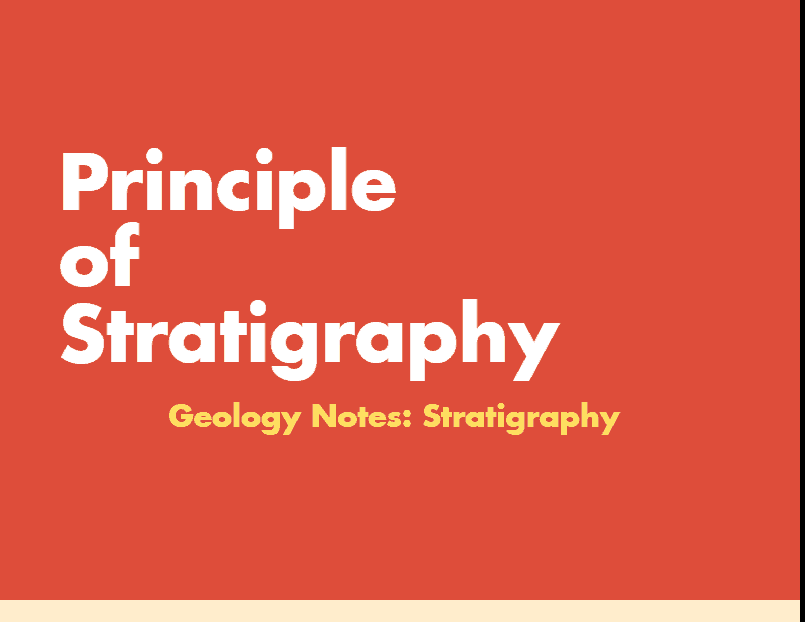Stratigraphy – Geology Notes – For W.B.C.S. Examination.
স্তরবিদ্যা – ভূতত্ত্ব নোট – WBCS পরীক্ষা।
Stratigraphy is That branch of geology that deals with formation, composition, sequence, and correlation of stratified rocks. Since the whole Earth is stratified, at least in a broad sense, bodies of all the different types of rocks—igneous, sedimentary, metamorphic—are subject to stratigraphic study and analysis.Continue Reading Stratigraphy – Geology Notes – For W.B.C.S. Examination.
In most cases however, stratigraphy focuses on the evalua-tion of sedimentary rock strata. Modern principles of stratigraphic analysis were worked out in the 18 th and 19 th centuries by geologists such as Niels Stensen, James Hutton, Georges Cu-vier, William Smith and Charles Lyell. By 1900 all the intellectual tools needed to establish the description, sequence, and correlation of strata were in place. Shortly after 1900, the tools needed to establish the absolute age of minerals containing unstable radioisotopes also be-came available, giving stratigraphers a physical basis for making chronostratigraphic correla-tions, at least in certain, favourable stratigraphic situations. Since the 1950’s effort has also been expended in establishing international standards for stratigraphic nomenclature, usage of stratigraphic terms, and the internationally agreed designation of ‘type-sections’ or strato-types for various sorts of stratigraphic units, especially those relating to chronostratigraphy. Figure 1. Steno’s conceptual interpretation of the stratigraphic history of Tuscany. A. Flat-lying, continuous sediments were deposited beneath marine waters. B. lithified sediments are uplifted and subterranean voids or caverns develop through the erosive action of subsurface waters. C.
When the subterranean voids grow sufficiently large collapse of the roofing layers takes place elevating the cavern walls, down-dropping flat-laying layers that remain intact, and causing the tilting of blocks adjacent to the elevated areas. D. submer-gence of the entire land surface, once again, causes flat-lying, continuous sediments be to deposited. E. These new sediments are lithified and uplifted, after which new, cavernous voids develop. F. A new round of erosional collapse further modifies the landscape. Note how Steno’s model encompasses both the apparent directional and cyclic nature stratigraphic deposits and landscape formation. Redrawn from Steno’s diagram in De solido intra solidum naturaliter contento disseratiinis prodomus.
Here is a list of three important Indian stratigraphical system.
1. The Jurassic System:
Jurassic System overlies Triassic System rocks in the Standard Stratigraphic Scale and is well represented in Indian Stratigraphy both in extra-Peninsular and Peninsular India.
In the extra-Peninsula, the Jurassic rocks of marine facies conformably overlie in the Triassic rocks at many places such as in Spiti, Kashmir and Salt Range. In Peninsular India, development of coastal marine and estuarine facies of Jurassic rocks has been studied in Rajasthan, Kutch and east coast of the Peninsula.
Spiti:
Rocks of Jurassic age succeed the Upper Triassic (massive limestone series) formations in Spiti and have been distinguished into a lower group of great thickness of massive limestones—the Kioto Limestones – and an Upper Group, chiefly composed of Shales and hence known as Spiti Shales.
The Kioto limestone is classed by many as of uppermost Triassic age. The series considered to be truly Jurassic in age is the Spiti Shales. It is separated by an unconformity at the base from the so-called Sulcacutus Beds.
The Spiti Shales are further distinguished into three stages namely Belemnite beds, Chidamu beds and Lochambal beds.
The Belemnite Beds are made up of brown shales of earthy texture containing calcareous concretions and nodules built around ammonitic nuclei. The typical fossil of the beds is Belemnopsis gerardi and hence the name.
The Chidamu Beds overlie the Belemnite beds and consist of black shales with iron oxide partings. These shales also contain calcareous concretions and nodules aggregated around ammonitic nuclei. These shales are characterized with typical fauna such as Phylloceras plicatus, Balnfordia wallichs, Perisphinctus tibetanus etc. from the Cephalopods and Rhynconella lacunose from the Brachiopods.
The Lochambal Beds are similar to Chidamu beds in their lithology being made of shinning splintery shales of black colour rich in calcareous concretions. The typical fossils of these layers include Basriasella, Blamfoldia and Acanthodiscus.
From the fossil assemblage an Upper Jurassic Age (Portiandian) has been assigned to Spiti Shales.
Kashmir:
Jurassic rocks have been traced in Ladakh and Banihal areas in Kashmir. At Ladakh, Jurassic formations comprising chiefly of limestones and shales (similar to Spiti sequence) directly overlie the Triassic sequence in a conformable manner. In Banihal, however, they occur on the north side of Banihal pass within a synclinal sequence of Triassic rocks. The Ladakh Shales do not contain any calcareous concretions like the Spiti Shales. Their fossils yield is also very meager and not well confirmed.
Please subscribe here to get all future updates on this post/page/category/website


 +919674493673
+919674493673  mailus@wbcsmadeeasy.in
mailus@wbcsmadeeasy.in







































































































